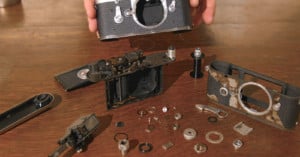
Here’s a Teardown of a Leica M Camera
There are about 1,200 moving parts inside a Leica M rangefinder. In this 3.5-minute video, Tamarkin Camera in Chicago disassembles a Leica M give show what goes on inside the famous red dot cameras.

There are about 1,200 moving parts inside a Leica M rangefinder. In this 3.5-minute video, Tamarkin Camera in Chicago disassembles a Leica M give show what goes on inside the famous red dot cameras.
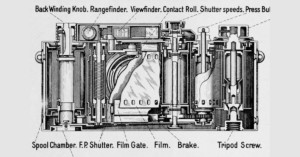
When the Leica camera was born in the early 1900s, it was the first practical 35mm camera to use standard 35mm cinema film. In 1930, Leica introduced the Leica I Schraubgewinde, which used an interchangeable lens system based on the Leica LTM (Leica Thread Mount) 39mm screw thread.
Want a peek of the inner workings of Leica's early LTM camera? Today's your lucky day.
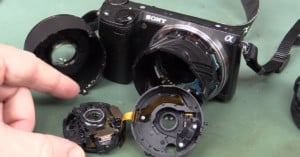
Want to see the inner workings of a Sony E-mount lens? Engineer Dave Jones of EEVblog was having problems with his $350 Sony 16-50mm f/3.5-5.6 OSS E-mount lens, so he decided to take it apart on camera to see what's inside. You can watch the teardown in the 26-minute video above.
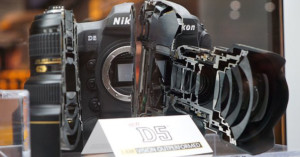
Nikon's big announcement at CES 2016 in Las Vegas this year was the new flagship D5 DSLR. In the company's exhibition space, Nikon is displaying a Nikon D5 DSLR and Nikkor 14-24mm f/2.8 lens that have been sliced cleanly in half to show off the innards with a cross-section view.
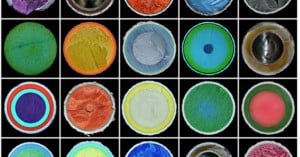
Photographer James Friedman doesn't play golf, but he had a collection of golf balls lying around. One day, he began to wonder what the guts of the golf balls look like, so he cut a ball open to take a peek at a core. Then he sliced open another, and another; after cutting open over twenty different types of golf balls, Friedman found a strange sort of beauty that he began to document through photographs. The resulting project is titled "Interior Design".
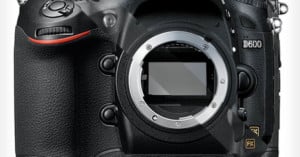
Proto-photo-blogger Ken Rockwell has interesting things to say about what he calls “Nikon’s …
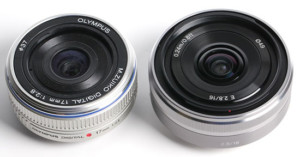
I’ve always been fascinated by pancake lenses. It just amazes me that something that small can actually function. As I mentioned in an earlier post, we’ve been taking things apart to determine where and how (and sometimes if) the lenses can be adjusted optically. So, I decided to do two pancake lenses for mirrorless cameras side-by-side to see how they differed (the Sony 16mm f/2.8 E mount and the Olympus 17mm f/2.8 micro 4/3 mount). I wasn’t sure there would be much we could do with pancakes (and there wasn’t), but I still found the look inside rather interesting.